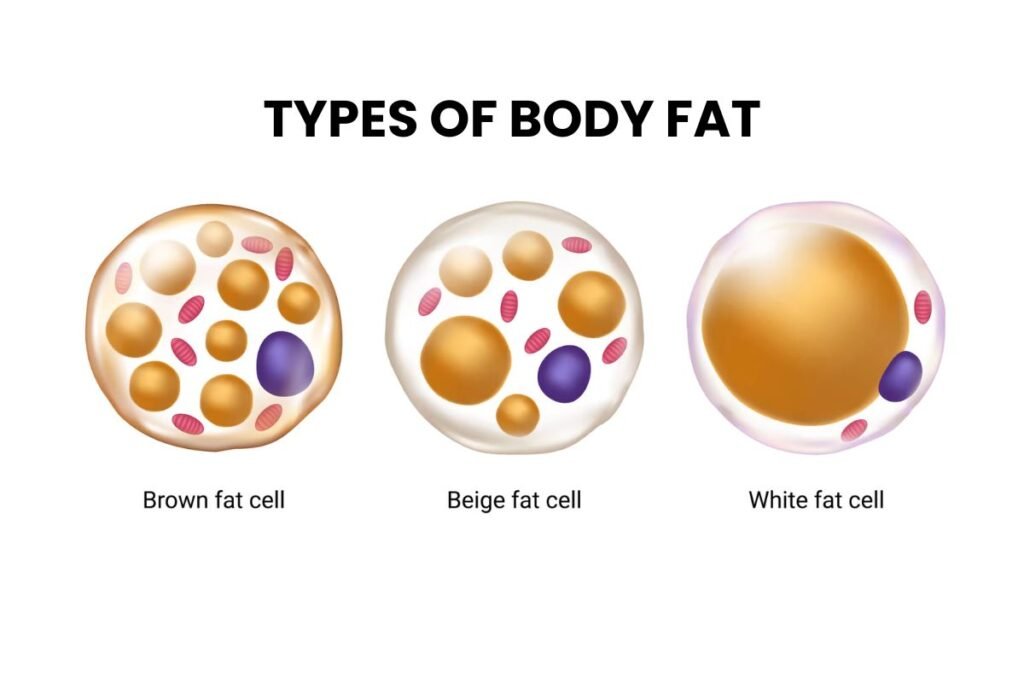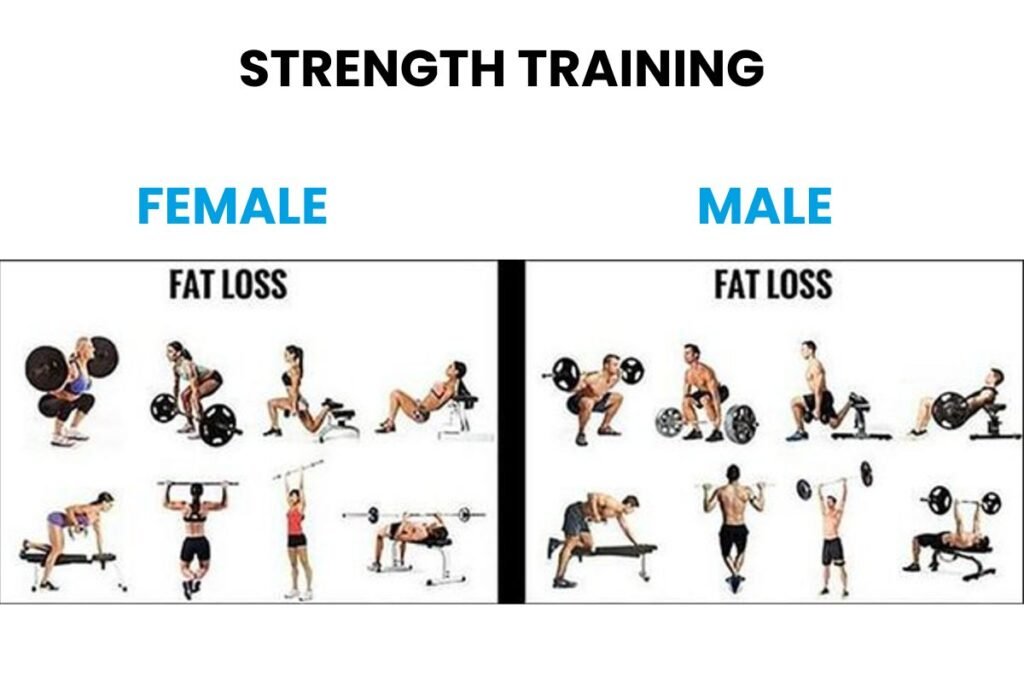The Science Behind Body Fat Reducers: What Really Works?

Introduction
Hey there, health enthusiasts! If you’ve ever embarked on the journey of reducing body fat, you know it’s a marathon, not a sprint. But what’s the science behind it? What actually works when it comes to shedding those extra pounds? Let’s dive in and uncover the truth about body fat reducers, backed by science.
Understanding Body Fat
Body fat, or adipose tissue, is essential for storing energy, insulating and protecting organs, and regulating hormones. There are different types of body fat, including white adipose tissue (WAT), which stores energy and insulates the body; brown adipose tissue (BAT), which burns energy to produce heat; and beige fat, which can switch between white and brown characteristics. Understanding these types can help in managing obesity and metabolic health.
What is Body Fat?
Body fat, or adipose tissue, is a complex organ that serves several essential functions in the human body. It is primarily composed of fat cells, or adipocytes, which store energy in the form of triglycerides. Body fat acts as an energy reservoir, providing fuel for the body’s metabolic processes. It also plays crucial roles in insulating and protecting organs, as well as in hormone production and regulation.
Types of Body Fat

There are several types of body fat, each with distinct characteristics and functions. The primary types include:
- White Adipose Tissue (WAT): The most common type of fat, WAT stores energy and insulates the body. It is found throughout the body, particularly under the skin (subcutaneous fat) and around internal organs (visceral fat).
- Brown Adipose Tissue (BAT): BAT is specialized in heat production and energy expenditure. It contains more mitochondria than WAT, which gives it a brown color. BAT is mostly found in newborns and decreases with age, although small amounts can be found in adults.
- Beige (or Brite) Fat: Beige fat is a type of fat cell that can convert from white to brown-like characteristics in response to certain stimuli, such as cold exposure. This process is known as “browning” and is linked to increased energy expenditure.
By understanding these different types of body fat and their functions, researchers can develop better strategies for managing obesity and metabolic diseases.
The Role of Metabolism
Metabolism is a set of life-sustaining chemical reactions in organisms. It includes the processes by which the body converts food into energy, which is used to fuel cellular processes, build and repair tissues, and perform bodily functions. Metabolism can be categorized into two broad types: catabolism (the breakdown of molecules to obtain energy) and anabolism (the synthesis of all compounds needed by the cells).
Basal Metabolic Rate (BMR)
Basal Metabolic Rate (BMR) is the rate at which the body expends energy while at rest in a neutrally temperate environment, in the post-absorptive state (i.e., the digestive system is inactive, which typically requires about 12 hours of fasting in humans). BMR accounts for the largest portion of total daily energy expenditure (TDEE), which includes all activities.
BMR is influenced by several factors, including age, sex, genetic predisposition, and body composition. For instance, muscle tissue requires more energy to maintain than fat tissue, so individuals with greater muscle mass have a higher BMR.
Factors Affecting Metabolism
Several factors can influence metabolism, either increasing or decreasing the rate at which the body uses energy. These factors include:
- Age: Metabolic rate generally decreases with age due to a loss of muscle mass and changes in hormonal activity.
- Sex: Males typically have a higher metabolic rate than females, primarily because they tend to have more muscle mass.
- Genetics: Genetic makeup can influence metabolic rate, with some people naturally having a faster or slower metabolism.
- Muscle Mass: More muscle mass increases the BMR since muscle tissue burns more calories at rest than fat tissue.
- Hormonal Factors: Hormones such as thyroxine (produced by the thyroid gland) play a crucial role in regulating metabolism. Thyroid disorders can significantly impact metabolic rate.
- Physical Activity: Regular exercise can increase muscle mass, thereby raising BMR. Physical activity also directly increases energy expenditure.
- Diet: Certain foods and beverages can affect metabolism. For instance, protein has a higher thermic effect compared to fats and carbohydrates, meaning it requires more energy to digest. Caffeine and capsaicin (found in spicy foods) can also temporarily boost metabolic rate.
- Environmental Factors: External conditions like extreme temperatures can influence metabolism as the body works to maintain a stable internal environment.
By understanding the various factors that affect metabolism, individuals can better manage their energy balance and maintain a healthy weight. For those seeking to optimize their metabolic rate, strategies might include increasing muscle mass through resistance training, ensuring a balanced diet, and maintaining an active lifestyle.
Popular Body Fat Reducers
Reducing body fat can be approached through various methods, each with its own evidence-based strategies and considerations. Here, we delve into the most common and effective methods: diet and nutrition, exercise and physical activity, supplements, and medical interventions.
Diet and Nutrition
Diet plays a crucial role in body fat reduction. The fundamental principle is to create a calorie deficit, where the body burns more calories than it consumes. However, the quality of the diet is equally important.
- Caloric Intake: Reducing caloric intake while ensuring nutrient-dense foods can help in fat loss. Balanced diets that include adequate protein, healthy fats, and complex carbohydrates are recommended.
- Macronutrient Composition: Higher protein intake can increase satiety and thermogenesis, aiding in weight loss. Healthy fats and fiber-rich carbohydrates also support metabolic health and satiety.
- Meal Timing: Intermittent fasting and meal timing strategies can influence metabolism and fat loss.

Exercise and Physical Activity
Regular physical activity is essential for reducing body fat and improving overall health. Both aerobic and anaerobic exercises play significant roles.
- Aerobic Exercise: Activities such as running, cycling, and swimming increase calorie burn and improve cardiovascular health. These activities are effective in reducing visceral fat.
- Resistance Training: Strength training exercises, such as weight lifting, help build muscle mass, which can increase basal metabolic rate (BMR) and enhance fat loss.
- High-Intensity Interval Training (HIIT): HIIT involves short bursts of intense exercise followed by rest or low-intensity exercise. It has been shown to be particularly effective in reducing abdominal fat and improving metabolic health.
Supplements

Various dietary supplements are marketed for fat loss, though their effectiveness can vary. Common supplements include:
- Caffeine: Known to increase metabolism and fat oxidation, caffeine is commonly found in weight loss supplements.
- Green Tea Extract: Contains catechins and caffeine, which can enhance fat oxidation and increase energy expenditure.
- Protein Supplements: Protein powders can help increase protein intake, supporting muscle maintenance and satiety during weight loss.
- CLA (Conjugated Linoleic Acid): Some studies suggest CLA can help reduce body fat, though results are mixed.
Medical Interventions
For individuals who struggle with significant obesity and related health issues, medical interventions may be necessary. These include:
- Prescription Medications: Drugs like orlistat, phentermine, and liraglutide can aid in weight loss by reducing appetite or inhibiting fat absorption.
- Bariatric Surgery: Surgical options such as gastric bypass, sleeve gastrectomy, and adjustable gastric banding can lead to significant and sustained weight loss. These procedures are typically recommended for individuals with a BMI over 40, or over 35 with obesity-related health conditions.
- Non-Surgical Procedures: Techniques like cryolipolysis (CoolSculpting) and laser lipolysis are non-invasive methods that target and reduce localized fat deposits.
By understanding and utilizing these various approaches to fat reduction, individuals can make informed decisions to achieve and maintain a healthy body composition.
Natural Fat Burners
Natural fat burners are substances found in nature that can help boost metabolism, increase fat oxidation, or promote feelings of fullness, thereby aiding in fat loss. Below, we explore three popular natural fat burners: green tea extract, caffeine, and protein.
Green Tea Extract
Green tea extract is derived from the leaves of the Camellia sinensis plant and is rich in antioxidants, particularly catechins. The most potent catechin in green tea is epigallocatechin gallate (EGCG), which has been extensively studied for its fat-burning properties.
- Mechanism of Action: Green tea extract boosts metabolism through thermogenesis, the process by which the body generates heat by burning calories. EGCG, in combination with caffeine, enhances the thermogenic effect.
- Evidence of Efficacy: Numerous studies have demonstrated that green tea extract can increase fat oxidation and improve metabolic rate. It is particularly effective in reducing visceral fat.
- Dosage and Use: Effective doses typically range from 250 to 500 mg of green tea extract per day, standardized to contain 50-90% catechins and 30-50% EGCG.
Caffeine
Caffeine is a natural stimulant found in coffee, tea, and various other plants. It is widely recognized for its ability to enhance alertness and physical performance, but it also has significant fat-burning properties.
- Mechanism of Action: Caffeine works by stimulating the central nervous system, which increases the release of adrenaline. This hormone signals the body to break down fat cells and release them into the bloodstream as free fatty acids, which can be used for energy.
- Evidence of Efficacy: Research indicates that caffeine can increase metabolic rate by 3-11% and significantly enhance fat oxidation, particularly during exercise. Its effects on metabolism can contribute to weight loss over time.
- Dosage and Use: The effective dose of caffeine for fat burning typically ranges from 100 to 400 mg per day. However, tolerance to caffeine can develop, reducing its effectiveness over time.
Protein
Protein is a macronutrient that plays a critical role in building and repairing tissues, including muscle. It is also known for its thermogenic and satiating effects, which can aid in fat loss.
- Mechanism of Action: Protein has a higher thermic effect of food (TEF) compared to fats and carbohydrates, meaning it requires more energy to digest, absorb, and metabolize. Additionally, high protein intake can promote satiety, reduce appetite, and prevent muscle loss during weight loss.
- Evidence of Efficacy: Numerous studies have shown that diets high in protein can significantly enhance fat loss, preserve lean body mass, and improve metabolic health. High protein intake can also reduce hunger and prevent overeating.
- Dosage and Use: The recommended protein intake for weight loss ranges from 1.2 to 1.6 grams per kilogram of body weight per day. Sources of high-quality protein include lean meats, fish, dairy, legumes, and protein supplements.
By incorporating natural fat burners such as green tea extract, caffeine, and protein into a balanced diet and active lifestyle, individuals can enhance their fat loss efforts and improve overall health.
Science-Backed Methods for Reducing Body Fat
Reducing body fat effectively and sustainably can be achieved through methods supported by scientific research. These methods include maintaining a caloric deficit, engaging in high-intensity interval training (HIIT), and incorporating strength training into a regular exercise regimen. Each approach offers unique benefits and mechanisms that contribute to fat loss.
Caloric Deficit
A caloric deficit occurs when the body expends more energy than it consumes. This energy imbalance forces the body to utilize stored fat as fuel, leading to fat loss.
- Mechanism of Action: When in a caloric deficit, the body begins to break down stored fat into free fatty acids and glycerol, which are then used to produce energy. This process is regulated by hormonal signals, particularly insulin and glucagon.
- Evidence of Efficacy: Numerous studies have demonstrated that a sustained caloric deficit is essential for weight loss. The specific composition of the diet (e.g., macronutrient balance) can also influence the effectiveness and sustainability of fat loss.
- Practical Application: To achieve a caloric deficit, individuals can reduce their caloric intake through dietary changes and/or increase their energy expenditure through physical activity. Tools such as food diaries, calorie tracking apps, and professional dietary guidance can assist in managing caloric intake.
High-Intensity Interval Training (HIIT)

High-Intensity Interval Training (HIIT) involves alternating between short bursts of intense exercise and periods of rest or low-intensity exercise. This training method is known for its efficiency in burning calories and improving cardiovascular fitness.
- Mechanism of Action: HIIT stimulates both aerobic and anaerobic pathways, leading to increased calorie burn during and after exercise. The intense bursts of activity elevate the heart rate and metabolism, promoting greater fat oxidation.
- Evidence of Efficacy: Research indicates that HIIT can be more effective than traditional steady-state cardio in reducing body fat, particularly visceral fat. HIIT also improves metabolic health markers such as insulin sensitivity and VO2 max.
- Practical Application: Typical HIIT workouts can range from 15 to 30 minutes and may include activities like sprinting, cycling, or bodyweight exercises. The key is to perform exercises at maximum effort followed by recovery periods.
Strength Training

Strength training, also known as resistance training, involves exercises that cause muscles to contract against an external resistance. This type of exercise is crucial for building muscle mass, which can enhance fat loss.
- Mechanism of Action: Strength training increases muscle mass, which in turn raises the basal metabolic rate (BMR). A higher BMR means that the body burns more calories at rest. Additionally, strength training can induce the afterburn effect (excess post-exercise oxygen consumption or EPOC), where the body continues to burn calories after the workout.
- Evidence of Efficacy: Studies have shown that strength training is effective in reducing body fat, improving body composition, and preserving lean muscle mass during weight loss. It also enhances overall metabolic health.
- Practical Application: Strength training can be performed using free weights, resistance machines, or bodyweight exercises. It is recommended to engage in strength training exercises at least two to three times per week, targeting all major muscle groups.
By incorporating these science-backed methods—maintaining a caloric deficit, engaging in HIIT, and performing strength training—individuals can effectively reduce body fat and improve their overall health and fitness.
Myths About Fat Loss
Spot Reduction
Spot reduction is the idea that you can lose fat in specific areas of your body by targeting those areas with exercises. However, this is a myth.
- Mechanism: When you lose fat, your body reduces it from all over, not just the targeted areas.
- Evidence: Research has consistently shown that exercises targeting specific body parts do not significantly affect fat loss in those areas. Instead, a combination of overall caloric deficit, cardiovascular exercise, and strength training is more effective.
Fat-Burning Foods
Fat-burning foods refer to certain foods that are believed to increase fat loss. While some foods can boost metabolism or reduce appetite, they cannot solely burn fat.
- Mechanism: Foods like green tea, chili peppers, and coffee may have thermogenic properties that slightly increase calorie expenditure, but their impact is minimal compared to overall diet and exercise.
- Evidence: While these foods can support a weight loss plan, relying on them alone is not effective. Comprehensive dietary changes and lifestyle modifications are necessary for significant fat loss.
The Importance of Sleep
Adequate sleep is crucial for overall health and effective fat loss.
- Mechanism: Poor sleep can disrupt hormones like leptin and ghrelin, which regulate hunger and appetite, leading to increased calorie intake and reduced energy expenditure.
- Evidence: Studies have shown that individuals who do not get enough sleep are more likely to gain weight and have higher body fat percentages.
The Impact of Stress on Body Fat
Stress can significantly impact body fat and weight management.
- Mechanism: Stress triggers the release of cortisol, a hormone that can increase appetite and promote fat storage, particularly in the abdominal area.
- Evidence: Chronic stress is associated with increased risk of obesity and metabolic syndrome.
Practical Tips for Sustainable Fat Loss
- Balanced Diet: Focus on whole foods, lean proteins, healthy fats, and fiber-rich carbohydrates.
- Regular Exercise: Combine aerobic exercises with strength training.
- Hydration: Drink plenty of water to support metabolism and reduce hunger.
- Mindful Eating: Pay attention to hunger and fullness cues, avoid distractions while eating.
- Consistency: Maintain a consistent routine for eating and exercise.
Monitoring Progress
Track your progress to stay motivated and make necessary adjustments.
- Methods: Use a combination of methods such as weight tracking, body measurements, progress photos, and fitness milestones.
- Tools: Apps, journals, and wearable technology can help track progress.
Common Mistakes to Avoid
- Crash Dieting: Leads to muscle loss and a slower metabolism.
- Overtraining: Can cause burnout and injuries.
- Neglecting Strength Training: Important for maintaining muscle mass and metabolism.
- Skipping Meals: Can lead to overeating later.
Personalized Approaches
Customize your fat loss plan to fit your lifestyle, preferences, and goals.
- Considerations: Age, gender, activity level, medical conditions, and personal preferences should all be taken into account.
The Role of Genetics
Genetics can influence body fat distribution and metabolic rate.
- Impact: While genetics play a role, lifestyle choices are crucial for managing weight and body fat.
Conclusion
Effective fat loss involves a combination of a balanced diet, regular exercise, adequate sleep, stress management, and personalized strategies. Understanding and applying science-backed methods can lead to sustainable results.
Article Resource :
Research Title: “Adipose Tissue: A Complex and Essential Metabolic Organ”
Source URL: National Institutes of Health – Adipose Tissue Biology
Disclaimer: This article is intended for informational and educational purposes only. The content provided on this page is not meant to replace professional medical advice, diagnosis, or treatment. Always seek the advice of your physician or other qualified health provider with any questions you may have regarding a medical condition or dietary needs. Reliance on any information provided here is solely at your own risk.




